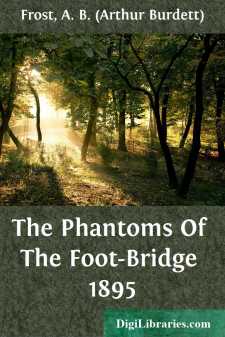Categories
- Antiques & Collectibles 13
- Architecture 36
- Art 48
- Bibles 22
- Biography & Autobiography 813
- Body, Mind & Spirit 142
- Business & Economics 28
- Children's Books 17
- Children's Fiction 14
- Computers 4
- Cooking 94
- Crafts & Hobbies 4
- Drama 346
- Education 46
- Family & Relationships 57
- Fiction 11829
- Games 19
- Gardening 17
- Health & Fitness 34
- History 1377
- House & Home 1
- Humor 147
- Juvenile Fiction 1873
- Juvenile Nonfiction 202
- Language Arts & Disciplines 88
- Law 16
- Literary Collections 686
- Literary Criticism 179
- Mathematics 13
- Medical 41
- Music 40
- Nature 179
- Non-Classifiable 1768
- Performing Arts 7
- Periodicals 1453
- Philosophy 64
- Photography 2
- Poetry 896
- Political Science 203
- Psychology 42
- Reference 154
- Religion 513
- Science 126
- Self-Help 84
- Social Science 81
- Sports & Recreation 34
- Study Aids 3
- Technology & Engineering 59
- Transportation 23
- Travel 463
- True Crime 29
Our website is made possible by displaying online advertisements to our visitors.
Please consider supporting us by disabling your ad blocker.
Transactions of the American Society of Civil Engineers, Vol. LXX, Dec. 1910 A Concrete Water Tower, Paper No. 1173
by: A. Kempkey
Categories:
Description:
Excerpt
The City of Victoria is situated on the southern end of Vancouver Island, in the Province of British Columbia, Canada, and is the capital of the Province.
In common with all cities of the extreme West, its growth has been very rapid within the last few years. The population of the city proper, together with that of the municipality of Oak Bay, immediately adjacent, is now about 35,000.
The Victoria water-works are owned by the city and operated under the direction of a Water Commissioner appointed by the City Council. By special agreement, water is supplied to Oak Bay in bulk, this municipality having its own distributing system.
The rapid increase in population, together with the fact that in recent years very little had been done toward increasing the water supply, resulted in the necessity for remodeling the entire system, and there are very few cities where this would involve as many complex problems or a greater variety of work.
Water is drawn from Elk Lake, situated about five miles north of the city; thence it flows by gravity to the pumping station about four miles distant, and from there is pumped directly to the consumers.
The remodeling of the system, as recently completed, provided for:
1.—Increasing the capacity of Elk Lake by a system of levees.
2.—Increasing the capacity of the main to the pumping station by replacing about two miles of the old 16-in., wrought-iron, riveted pipe with 24-in. riveted steel pipe.
3.—Increasing the capacity of the pumping station by the installation of a 4,500,000-gal. pumping engine of the close-connected, cross-compound, Corliss, crank-and-fly-wheel type.
4.—The construction of a 20,000,000-gal. concrete-lined distributing reservoir in the city.
5.—The entire remodeling of the distributing system, necessitating the laying of about 1/2 mile each of 18-in. and 27-in. pipe, and about 1 mile of 24-in. riveted steel pipe; also about 3,000 tons of cast-iron pipe, varying in size from 4 to 12 in.
6.—The provision for a high-level service by means of an elevated tank of approximately 100,000 gal. capacity, water being supplied to the tank by two electrically-driven triplex pumps, each having a capacity of 100,000 gal. per 24 hours, against a dynamic head of 150 ft., and arranged to start and stop automatically with a variation of 3 ft. in the elevation of the water in the tank. These pumps are located about one mile from the tower, and are controlled by a float-operated auto-start, in the base of the tower.
A description of the elevated tank, which is novel in design, with the reasons for adopting the type of structure used, the method of construction, and the detailed cost, form the basis of this paper.
The tower is on the top of the highest hill in the city, in the heart of the most exclusive residential district, beautiful homes clustering about its base. The necessity for architectural treatment of the structure is thus seen to be of prime importance. In fact, the opposition of the local residents to the ordinary type of elevated tank, that is, latticed columns supporting a tank with a hemispherical bottom and a conical roof, rendered its use impossible, although tenders were invited on such a structure....












